
Tiger
Designed and Built By Doug Irwin.
Debut Aug 4, 1979 - Oakland Auditorium
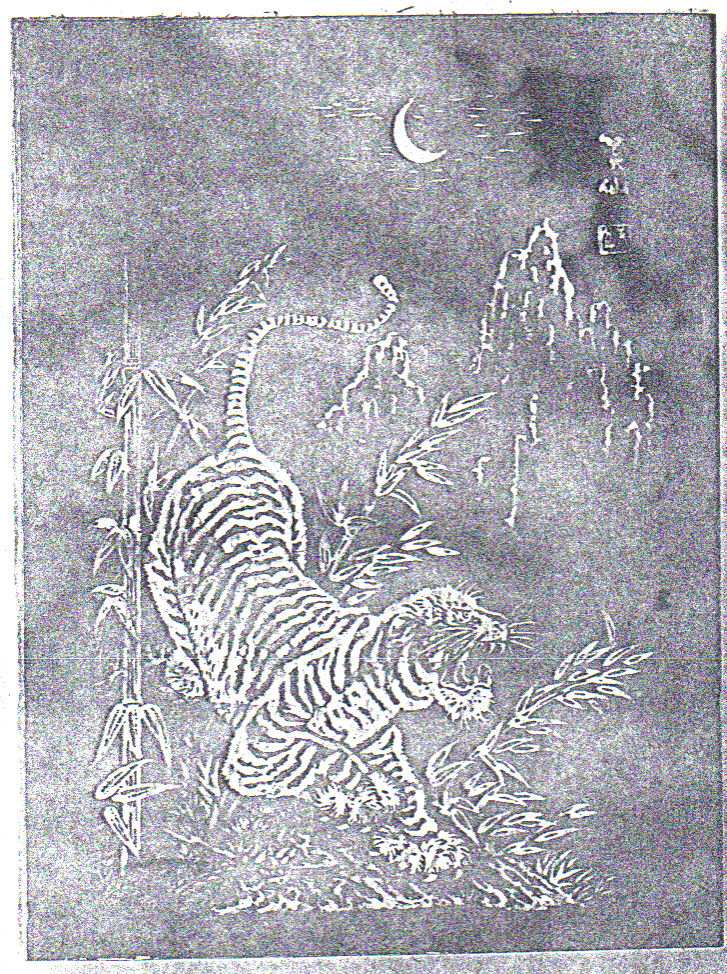
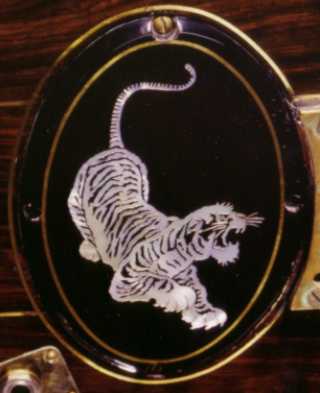

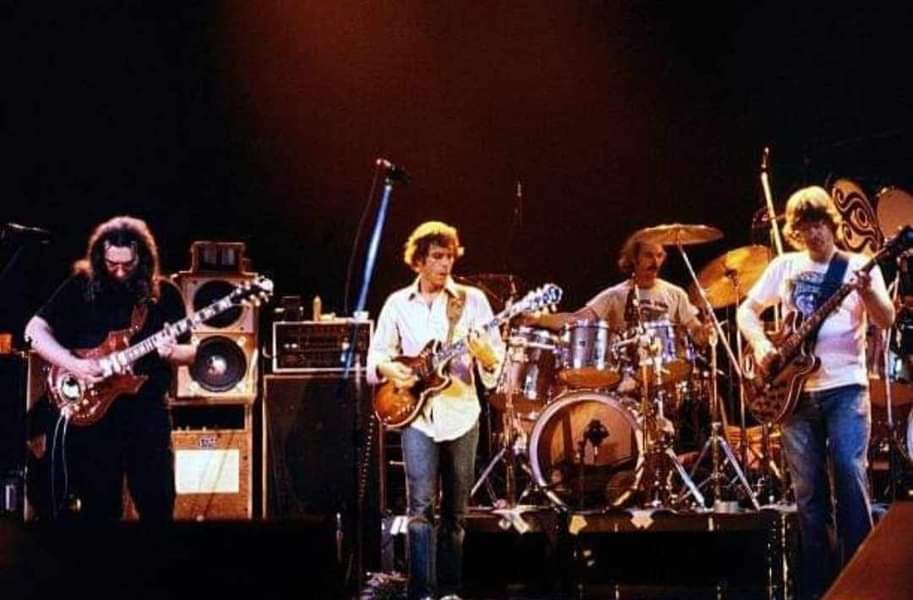
Setups of The Stars - J.Garcia's Tiger
Guitar Player - April 1, 2001
By Gary Brawer
Jerry Garcia's guitars, built by luthier Doug Irwin, are
as much one-of-a-kind works of art as they are musical instruments. I
worked on Garcia's guitars for years, and I still get questions about
them.
This guitar is called "Tiger" because of the beautiful inlay
on the battery/preamp compartment cover. The body is made up of many layers
of wood including what appears to be a Cocabola top and back with a maple
center section (which may be hollowed out in parts). Sandwiched in between
are thin layers of paduk, purpleheart, and brass. The maple neck has a
hardwood section (possibly paduk) inlayed in the back and the ebony fretboard
has brass binding.
Garcia played with high action--7/64" at the 12th fret, with .030"
relief in the neck. At the nut, the strings a were also quite high at
about .030" above the 1st fret. The ebony fingerboard has a 16"
radius and sports. 105" x .45" frets. The neck and middle pickups
are 10/64" from the strings, and the bridge pickup sits 14/64"
away. (The bridge was made by Schaller for Gibson, and the tailpiece was
custom made for the guitar.) The brass nut is scalloped between the strings,
and the spacing--as specified by Garcia--is equal between the edges of
the strings (as opposed to the centers of the strings being equidistant,
which is more common). Garcia used Vinci strings, gauged .010-.046. but
from time to time used an .011 on the high E and a .047 on the low E.
--GARY BRAWER
Tiger weighs 9lbs 6oz
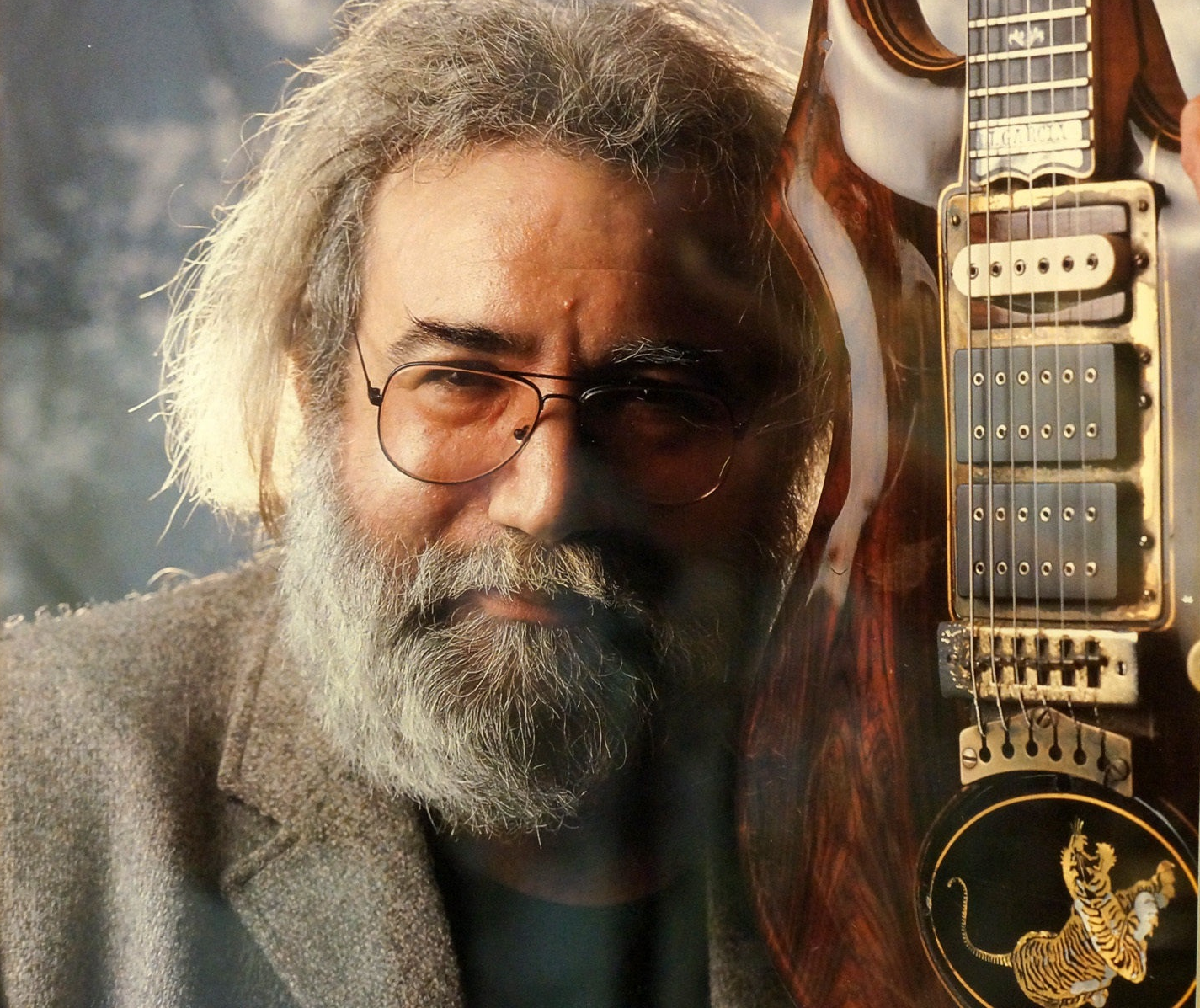
Tigers Wiring
The aspect of Tiger I am most acquainted with is its electronics. The guitar features a single-coil in the neck position, as opposed to the humbuckers you see on his other instruments. Garcia used a DiMarzio SDS-1 Strat-style pickup in the neck, and DiMarzio Super 2s in the middle and bridge. There is also a coil-cut switch for the middle and bridge pickups.
The guitar's wiring is somewhat unusual. The pickups are
switched by a standard 5-position pickup selector. The neck and bridge
share a tone control, and the middle pickup has its own tone control.
The output of the pickups goes directly into a unity-gain (no boost) preamp
powered by a 9-volt battery. The preamp protects the guitar signal against
high-end loss due to cable capacitance by lowering the output impedance.
From the preamp, the signal goes to an onboard effects loop switch, which
routs the signal either directly to the guitar's volume control or to
Garcia's effects (via a TRS jack), and then back into the guitar (through
the same TRS jack) to the guitar's volume control. From there, the signal
finally goes out the main output jack.
The genius of this wiring is that it allowed Garcia to
keep full volume going to the pedals while controlling his output volume
from the guitar. The advantage is that the tone and response of the pedals
would not change with the guitar's output volume, as it normally would
if Garcia plugged directly into them. The wiring also allowed for a true
bypass of the effects when they weren't in use.
Many thanks to Garcia's tech Steve Parish for his years of trust.
--GARY BRAWER

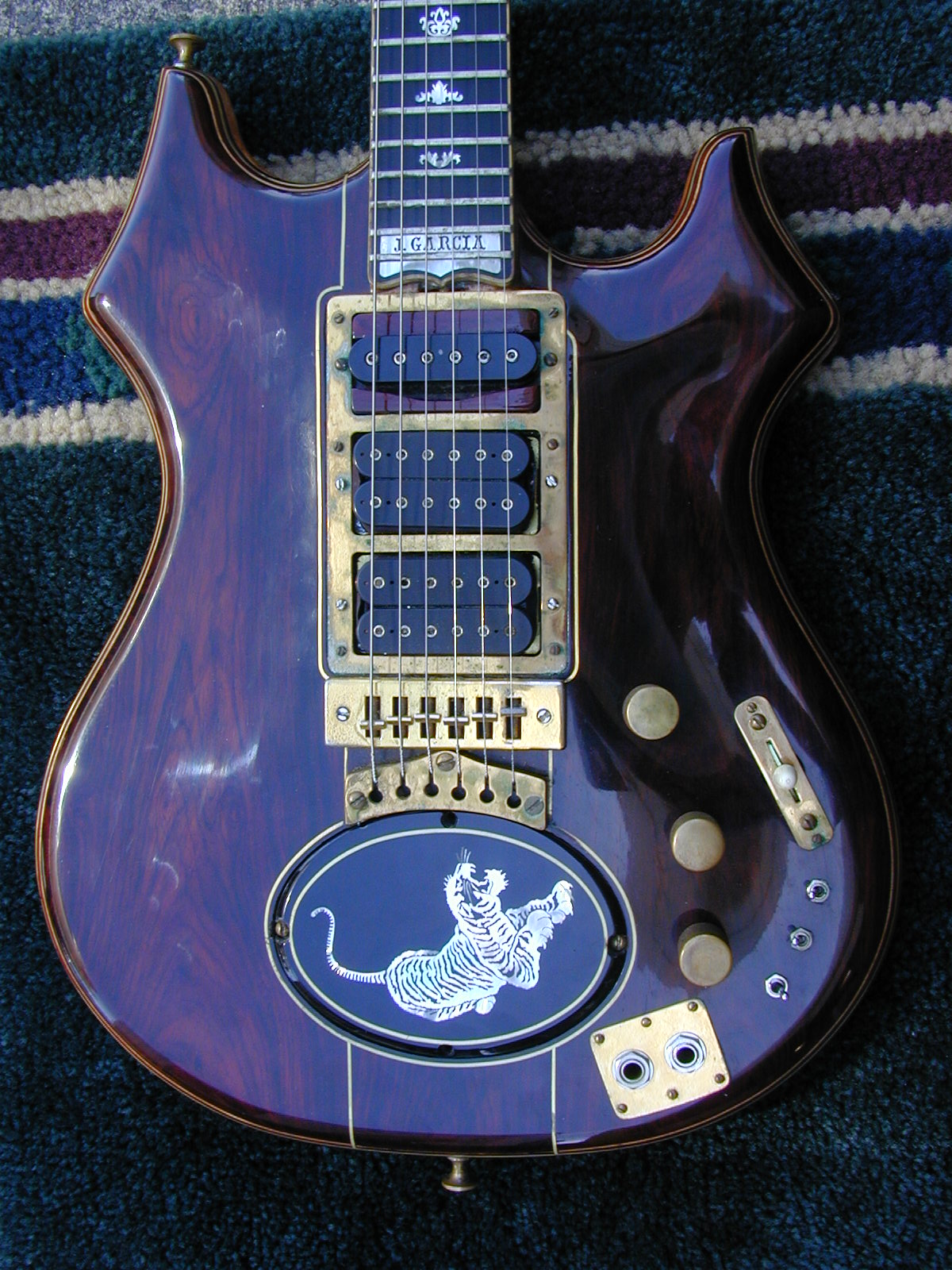
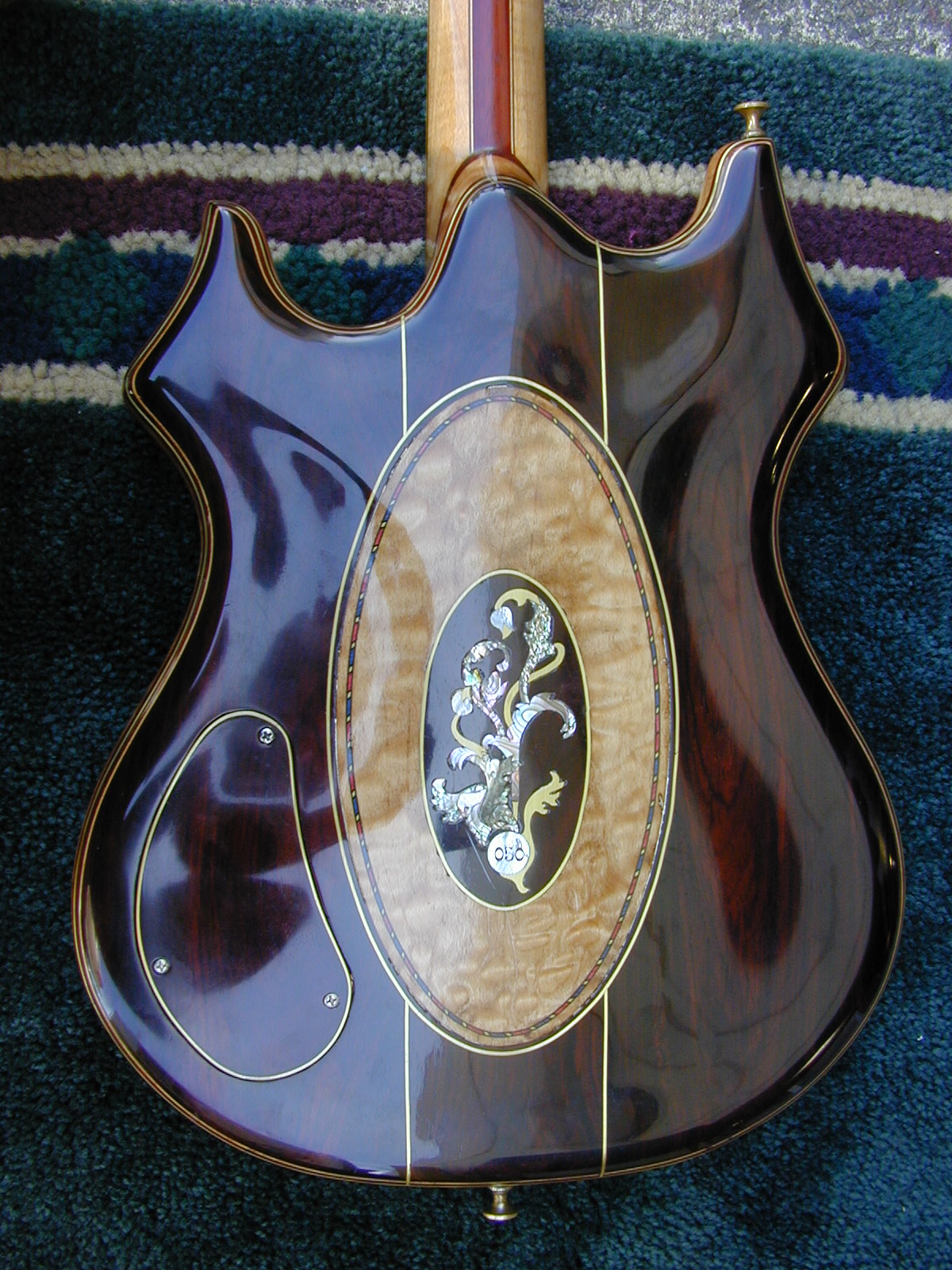






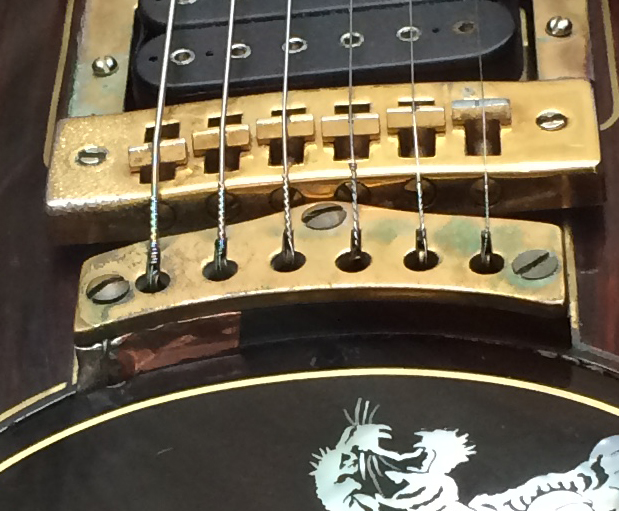

.jpg)

waldotronics© 2022 All Rights Reserved